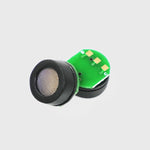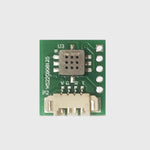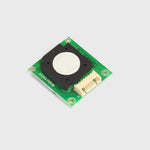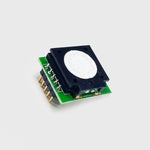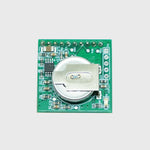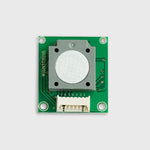You have no items in your shopping cart.
Since the appearance of of sensors, they have become the essential infrastructure devices of digital society because they have helped human to be able to obtain those information which were once difficult or unknowable to access. From smart phone to smart voice devices, from energy power station to industrial system, the sensors have turned to be the extended organs to connect human with machines and natural environment.
With the development of sensors, and related software and hardware technologies such as data storage, energy storage, new materials, and network infrastructure equipment, as well as the continuous decline in cost, the application scenarios of sensors will become more and more abundant.
Eight Trends in the Future
In the future, there will be more sensors to appear in our life, and they will become smaller, cheaper, more accurate, more flexible, consumption saving, environmental friendly, and at the same time they are able to collect more types of data, and integrated with more new technologies.


1.Medical application
Now sensors related with health are mainly for entertainment and residential sectors rather than medical field. In the future, more medical level sensors will be approved and used in medical purpose under rigid supervision.
As laboratory systems become miniaturized and emerging technologies for biohazard sensing will accelerate, wearable sensors will become truly medical-level devices rather than simple for life and entertainment. Medical testing will be easier, with one instrument being able to analyze more substances and reduce the need for test sample volumes, such as examination of health conditions through test of sweat and tears.
Swallowable pills are an application of miniaturization of laboratory systems. There are already many health techs using swallowable sensors instead of traditional endoscopy to reduce patient suffering. There are also technology companies that develop swallowable or implantable pills that can be administered continuously in the body for a long time, making daily treatment easier for patients.


2.Better sensing and more data
Future sensors will be sable to intimate human organs more efficiently as to detect, process and analysis complex signals, such as biohazard, smell, pressure of materials, pathogens and corrosion, etc. For example, these advanced sensors are not only capable of detecting a large number of individual analytes (e.g., carbon dioxide), but also deciphering every component of an odor.
NIn addition, smart motes are microscopic sensors driven by vibration that can monitor everything from battlefields, high-rise buildings, or blocked arteries.
3.Smaller size, lower cost
With the use of new platforms and materials, manufacturers are able to produce smaller sensors which has equivalent capabilities with electronic components in the millimeter and microwave levels. And costs will be reduced with less use of silicon, and more use of new platforms.
In the long term, self-calibration sensors have high benefits since the maintenance frequency and time can be reduced and therefore lower the costs. Besides the self-maintained sensors will have wider use especially in scenarios of disasters and danger risks.


4.Higher accuracy
At present, the research on multi-channel collaborative spectrum sensing is still in its early stage. When it becomes mature in the future, it will provide much accurate data monitoring than single channel sensors.
Sensors that are more accurate, reply and reproducible, will take more application share in the medical field, and achieve more powerful functions.
5.More Flexible
Flexible sensor is one of the most important direction in the future. At present, the flexible sensor, PH sensors, ion sensor and bio-sensors are only in the early stage of development, and they will have more application such as artificial skin, wearable sensors and micro-motion sensors.


Through microwire technology and magnetic fields, the sensor can be as thin as a hair, yet elastic, does not require a power supply, and can measure temperature, pressure, tensile, stress, torsion and position without contact.
6.Lower power consumption
Now most sensors are not power saving because they keep awake even not working. In the future, sensors can be smarter and driven by certain conditions to be awake, and almost no consumption when they are sleep.
In addition, sensor can obtain energy from environment for longer time operation, such as motion, pressure, light, or the heat difference between patient and the room air can become the power source of sensors.
7.More friendly to environment
In the future, environmentally friendly and biodegradable sensors will become increasingly popular.
For example, sensors can use bacteria-driven, degradable paper-based batteries, which can be used in fields such as farm land management, environmental monitoring, food monitoring, or medical detection without polluting the environment.


8. More complex and better integration
Sensors will become extra complex through coordination work. Sensor groups will be able to coordinate the work between every sensor and confirm work target and location through the running of self-study system.
In addition, the adoption of various new technologies will also make sensors more diverse. For example, with laser technology, sensors can identify the composition of substances through their unique spectra; Time-of-flight sensors measure the distance between two objects through pulses of infrared light; Piezoelectric sensors made of materials such as crystals, special ceramics, bone, DNA, proteins, etc. can better respond to external pressure and latent heat.
 English
English

